D Effect Size Interpretation
Effect sizes are particularly prominent in social science and in medical research where size of treatment effect is important. The reporting of effect sizes facilitates the interpretation of the importance of a research result in contrast to its statistical significance.
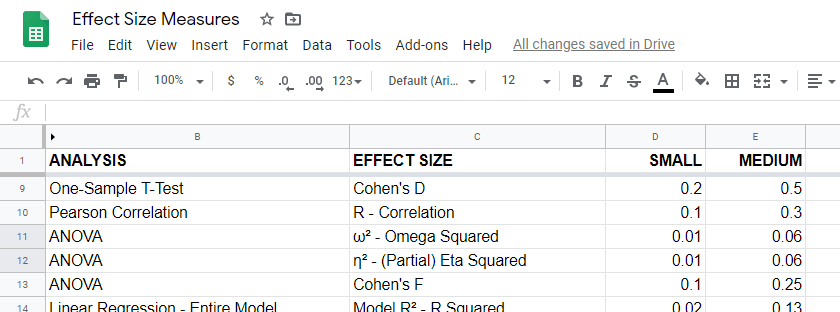
Effect Size In Statistics The Ultimate Guide
Cohens d can take on any number between 0 and infinity while Pearsons r ranges between -1 and 1.

D effect size interpretation. S 1 2 s 2 2. For Pearsons r the closer the value is to 0 the smaller the effect size. Effect sizes may be measured in relative or absolute terms.
Cohen suggested that d02 be considered a small effect size 05 represents a medium effect size and 08 a large effect size. As a complement to providing the effect size d 05 and its standard interpretation medium in size the researcher also should point out how this effect compares with those of other treatments of vocal hoarseness. In general a d of 02 or smaller is considered to be a small effect size a d of around 05 is considered to be a medium effect size and a d of 08 or larger is considered to be a large effect size.
For t tests 23 of the articles did not report an associated effect size estimate. This means that if the difference between two groups means is less than 02 standard deviations the difference is negligible even if it is statistically significant. This means that if two groups means dont differ by 02 standard deviations or more the difference is trivial even if it is statistically significant.
Transformed directly into d. This is important because what might be considered a small effect in psychology might be large for some other field like public health. How do you interpret effect size d.
If the s tandard deviation of the pairs is σ the effect size is represented by d where 𝑑𝑑 𝜇𝜇1𝜇𝜇2 𝜎𝜎 Cohen 1988 proposed the following interpretation of the d values. Equations for converting Hedges g into Cohens d and vice versa are included in the appendix. Recommendations for appropriate effect size measures and interpretation are included.
Note that Cohens D ranges from -043 through -213. Although a small d 20 is equivalent to a small r 10 the r equivalent of a medium-sized d 05 would be rated a small effect 24 not 30 in the correlational metric. The assumptions and limitations inherent in the reporting of effect size in research are also incorporated.
The larger the effect size the larger the difference between the average individual in each group. Standardized effect size measures are typically used when. One of the most common measurements of effect size is Cohens d which is calculated as.
In Example 3 Cohens d 134 standard deviation units. D 080 indicates a large effect. In contrast medical research is often associated with small effect sizes often in the 005 to 02 range.
A very easy to interpret effect size from analyses of variance ANOVAs is η 2 that reflects the explained proportion variance of the total variance. D 2 to 5. One type of effect size the standardized mean effect expresses the mean difference between two groups in standard deviation units.
Typically youll see this reported as Cohens d or simply referred to as d Though the values calculated for effect size are generally low they share the same range as standard deviation -30 to 30 so can be quite large. Social scientists commonly interpret d as follows although interpretation also depends on the intervention and the dependent variable. X 1 x 2.
The mean effect size in psychology is d 04 with 30 of of effects below 02 and 17 greater than 08. In case of unstandardized measures its interpretation largely depends on the scale on which it is measured. This proportion may be 13.
Mean of sample 1 and sample 2 respectively. Standardized and unstandardized effect sizes The term effect size can refer to a standardized measure of effect such as r Cohens d or the odds ratio or to an unstandardized measure eg the difference between group means or the unstandardized regression coefficients. And there we have it.
Effect size interpretation describing the critical value corresponding to small medium and large effect sizes. Cohens d formula to calculate the effect size for one-sample t-test for independent t-test with pooled standard deviation or not and for paired samples t-test also known as repeated measures t-test. The interpretation of an effect size is not straightforward.
Thus Cohen requires larger effects when measuring the strength of association. D 020 indicates a small effect d 050 indicates a medium effect and. In general the greater the Cohens d the larger the effect size.
For example perhaps a previously published study found an effect size of 092 for a 15-week30-hour clinician-directed treatment. A value closer to -1 or 1 indicates a higher effect size. In education research the average effect size is also d 04 with 02 04 and 06 considered small medium and large effects.
This can be seen by looking at the table below. The interpretation of any effect size measures is always going to be relative to the discipline the specific data and the aims of the analyst. The Effect Size Suppose we assume that μ 1 μ2 represents the mean of the pairs of the population of interest.
Nevertheless making this correction can be relevant for studies in pediatric psychology. Running the exact same t-tests in JASP and requesting effect size with confidence intervals results in the output shown below. Thus in Example 3 the effect size of d 134 is large but what does.
Cohens d was the most often reported. Effect size data interpretation statistical significance Introduction At present too many research results in. Calculation of the Cohens d in R.
D 5 to 8. Some minimal guidelines are that. One of the most famous interpretation grids was proposed by Cohen.
We provide a straightforward guide to understanding selecting. Practically speaking the correction amounts to a 4 reduction in effect when the total sample size is 20 and around 2 when N 50 Hedges Olkin 1985. Variance of sample 1 and sample 2 respectively.
Cohens d x 1 x 2 s 1 2 s 2 2 2. Cohen suggested that d 02 be considered a small effect size 05 represents a medium effect size and 08 a large effect size.

Cohen S D Effect Size For T Test

What Does Effect Size Tell You Simply Psychology

What Does Effect Size Tell You Simply Psychology

Cohen S D Effect Size For T Test
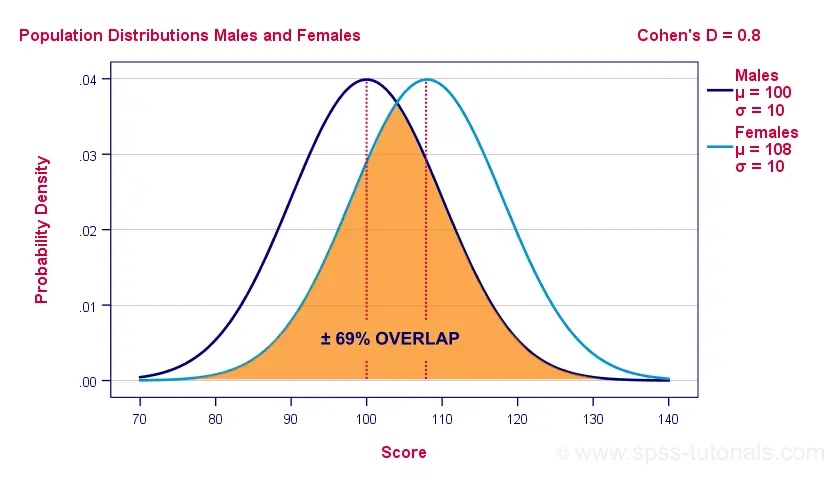
Cohen S D Effect Size For T Test

Ppt Interpreting Effect Size Results Powerpoint Presentation Free Download Id 3810030
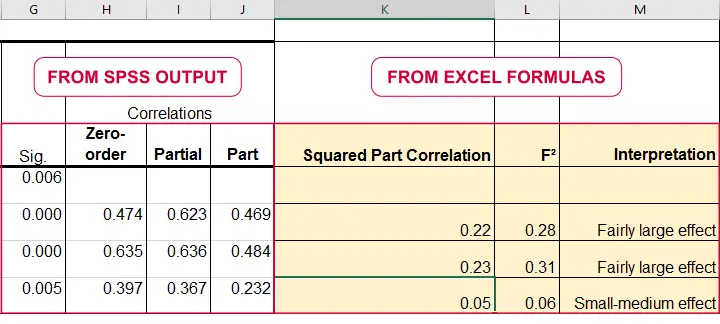
Effect Size In Statistics The Ultimate Guide
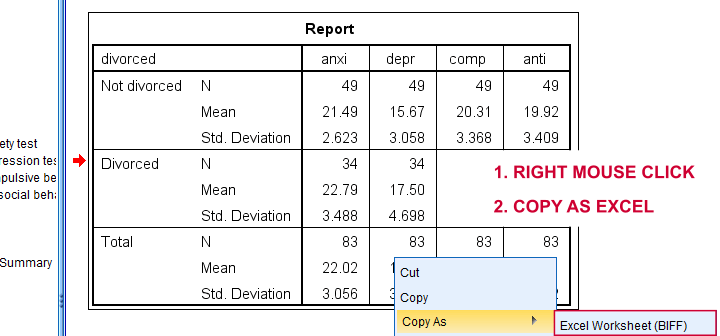
Cohen S D Effect Size For T Test

Solved 5 Effect Size Cohen S D And R Squared An Chegg Com

Effect Size In Spss One Sample T Test Cohen S D Youtube
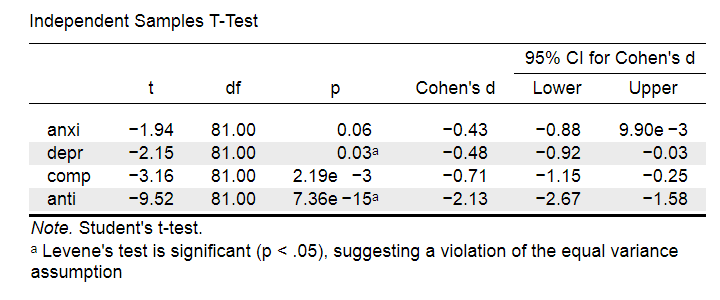
Cohen S D Effect Size For T Test

Practical Meta Analysis D B Wilson 1 Interpreting Effect Size Results Cohen S Rules Of Thumb Standardized Mean Difference Effect Size Small Ppt Download
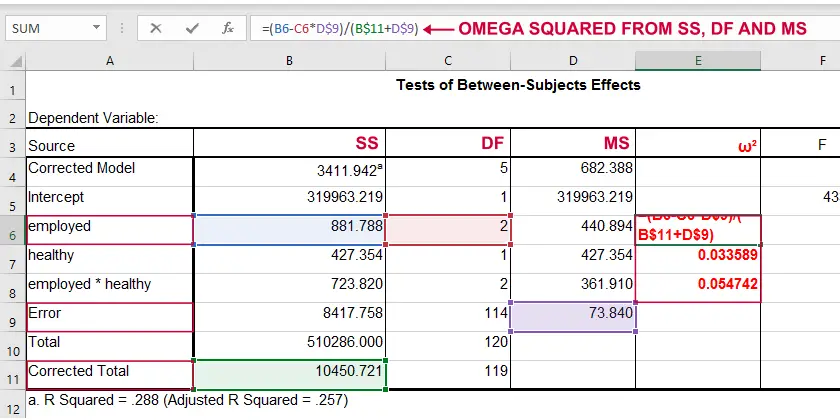
Effect Size In Statistics The Ultimate Guide

What Does Effect Size Tell You Simply Psychology
Posting Komentar untuk "D Effect Size Interpretation"